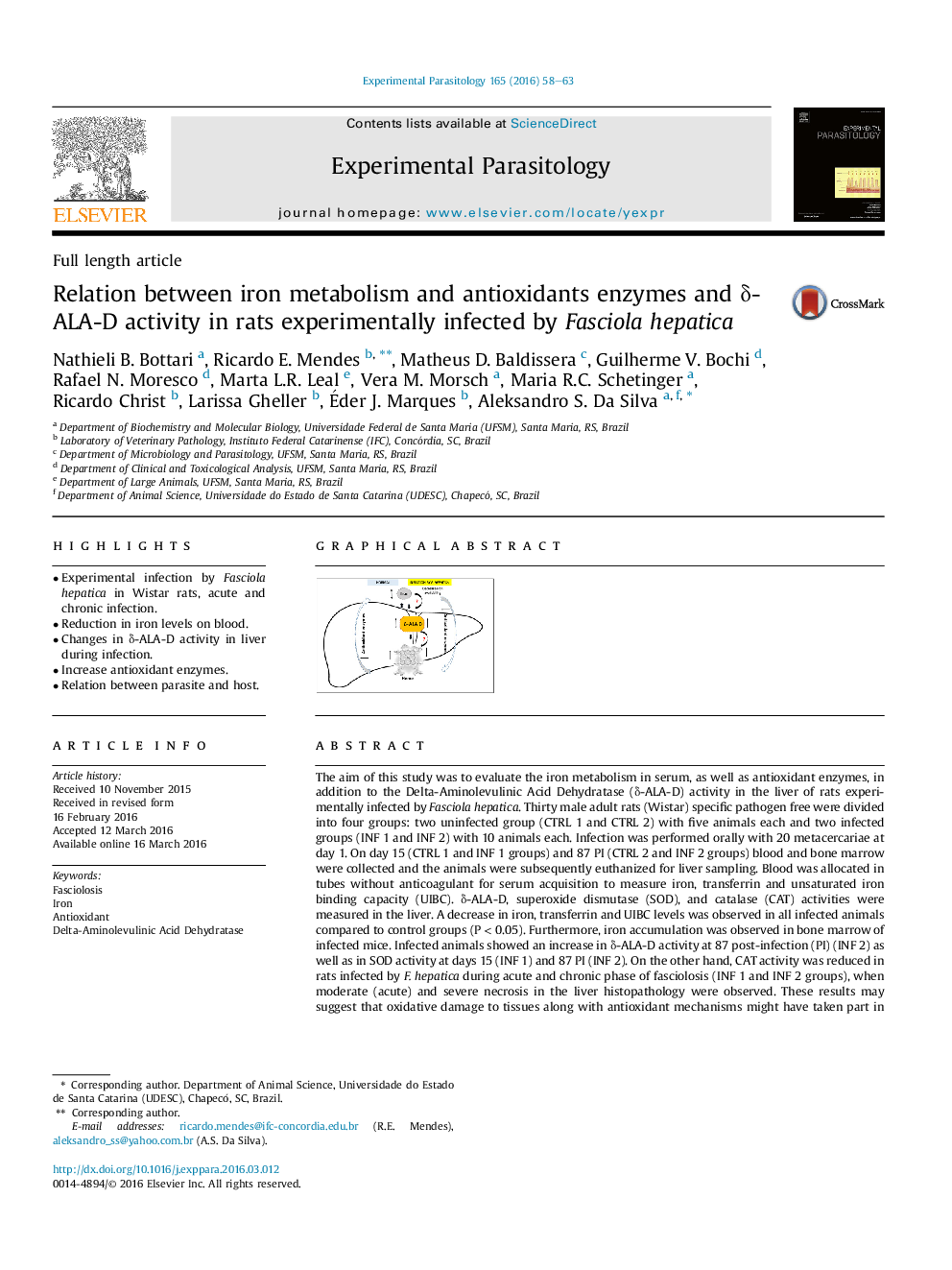| کد مقاله | کد نشریه | سال انتشار | مقاله انگلیسی | نسخه تمام متن |
|---|---|---|---|---|
| 4370954 | 1617000 | 2016 | 6 صفحه PDF | دانلود رایگان |

• Experimental infection by Fasciola hepatica in Wistar rats, acute and chronic infection.
• Reduction in iron levels on blood.
• Changes in δ-ALA-D activity in liver during infection.
• Increase antioxidant enzymes.
• Relation between parasite and host.
The aim of this study was to evaluate the iron metabolism in serum, as well as antioxidant enzymes, in addition to the Delta-Aminolevulinic Acid Dehydratase (δ-ALA-D) activity in the liver of rats experimentally infected by Fasciola hepatica. Thirty male adult rats (Wistar) specific pathogen free were divided into four groups: two uninfected group (CTRL 1 and CTRL 2) with five animals each and two infected groups (INF 1 and INF 2) with 10 animals each. Infection was performed orally with 20 metacercariae at day 1. On day 15 (CTRL 1 and INF 1 groups) and 87 PI (CTRL 2 and INF 2 groups) blood and bone marrow were collected and the animals were subsequently euthanized for liver sampling. Blood was allocated in tubes without anticoagulant for serum acquisition to measure iron, transferrin and unsaturated iron binding capacity (UIBC). δ-ALA-D, superoxide dismutase (SOD), and catalase (CAT) activities were measured in the liver. A decrease in iron, transferrin and UIBC levels was observed in all infected animals compared to control groups (P < 0.05). Furthermore, iron accumulation was observed in bone marrow of infected mice. Infected animals showed an increase in δ-ALA-D activity at 87 post-infection (PI) (INF 2) as well as in SOD activity at days 15 (INF 1) and 87 PI (INF 2). On the other hand, CAT activity was reduced in rats infected by F. hepatica during acute and chronic phase of fasciolosis (INF 1 and INF 2 groups), when moderate (acute) and severe necrosis in the liver histopathology were observed. These results may suggest that oxidative damage to tissues along with antioxidant mechanisms might have taken part in fasciolosis pathogenesis and are also involved in iron deficiency associated to changes in δ-ALA-D activity during chronic phase of disease.
Figure optionsDownload as PowerPoint slide
Journal: Experimental Parasitology - Volume 165, June 2016, Pages 58–63